Lemon plants are an acidic fruit that originated in China, Burma, and India.
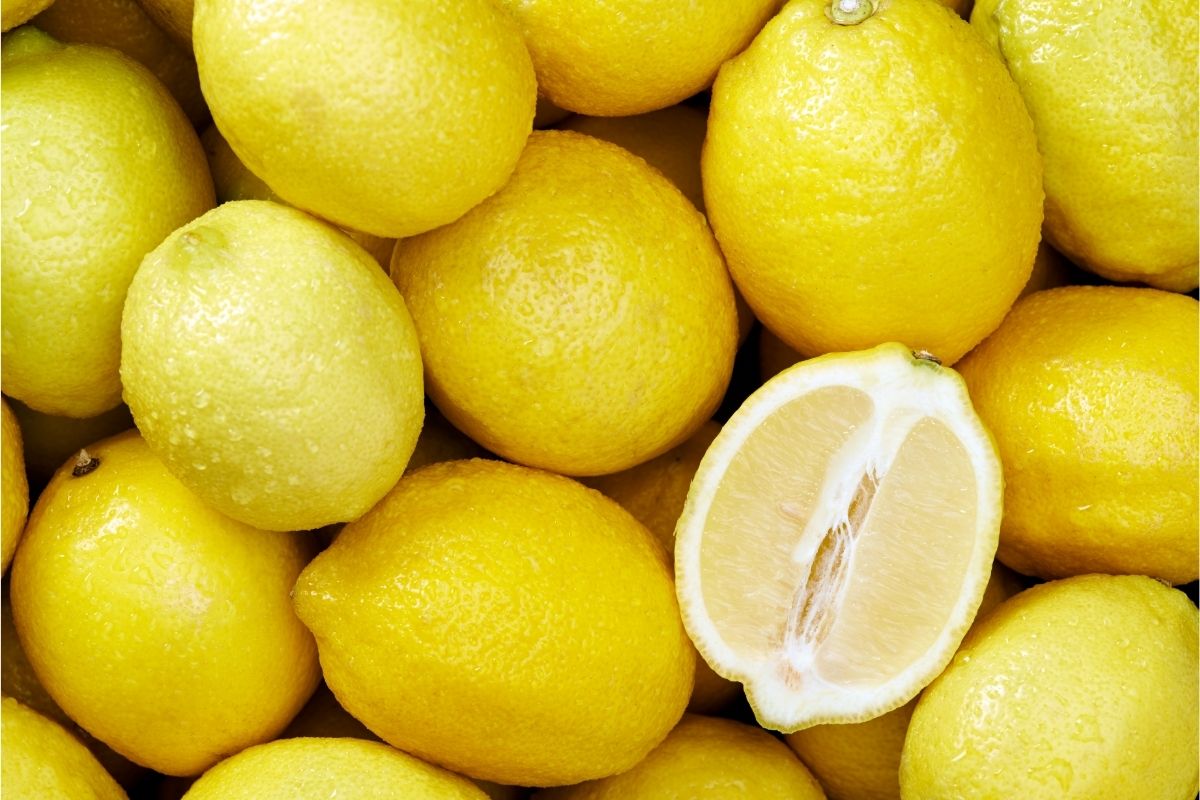
They are grown all over the world, but the most popular varieties come from Argentina, Brazil, India and Mexico. Lemons were cultivated in the first century AD, and have a rich history attached to them. They’ve been used in recipes, and for medicinal uses throughout the centuries.
There are both indoor and outdoor types of lemons, so you can choose whichever suits you best. If lemons are kept in the right condition, they can grow up to 100 years old. Plus, lemon trees grow well in any climate.
Lemon trees yield a high produce, and you can harvest lemons up to six or seven times per season.
As you can imagine, there are a dozen varieties of lemon plants. We’re going to share with you some of the most common, and most unusual, varieties of lemon plants.
So, if you want to learn about different lemon varieties, keep reading!
Different Types Of Lemons Plants
1. Eureka Lemons
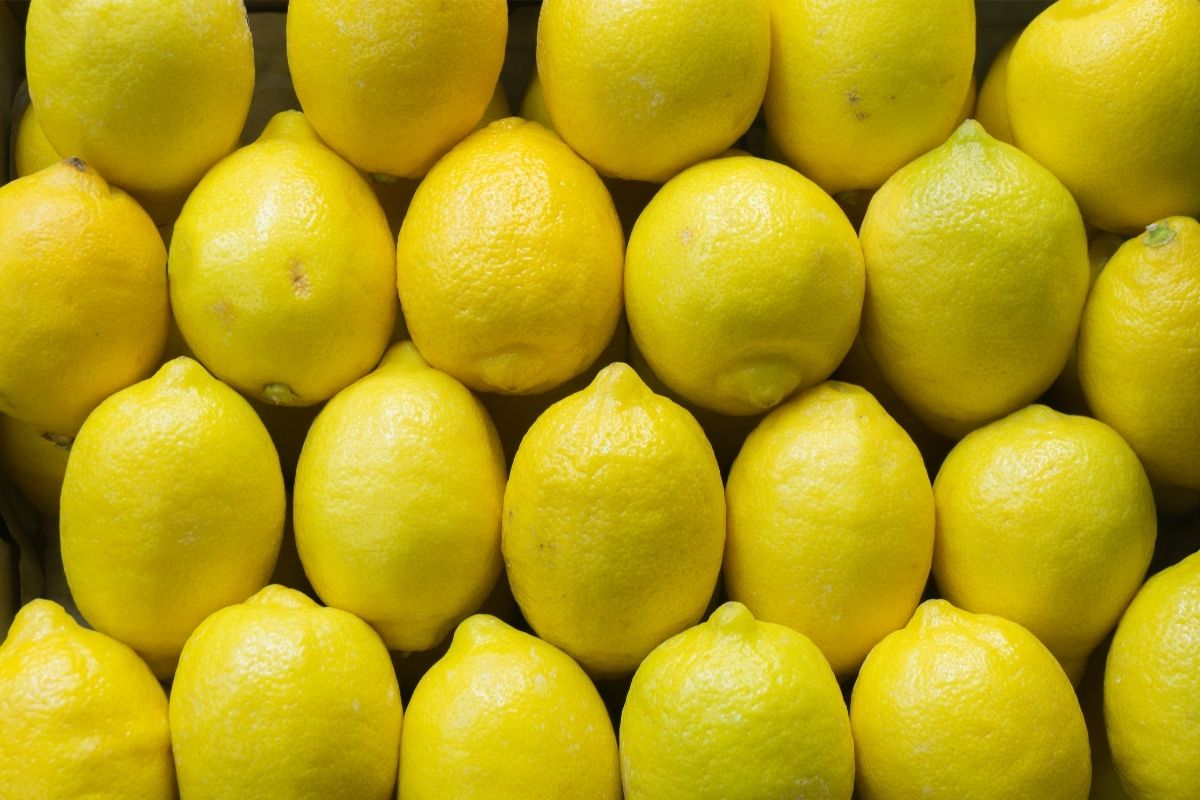
Eureka lemons are a very common variety of lemon that is easy to grow. They’re great for beginners, but even advanced gardeners appreciate eureka lemons.
One reason they’re very popular among growers is because they put out large yields. In fact, they have a reputation for producing large amounts of fruit all year long.
Eureka lemons look very similar to common hybrid lemons, but it is easy to spot a eureka lemon. This is because once the fruit has matured, they have a prominent raise bump, distinct from other varieties.
While eureka lemons do well in both indoor and outdoor environments, they’re best grown outdoors. This is because the plant can grow quite big, and would thrive in an open environment, rather than contained indoors.
2. Ponderosa Lemon
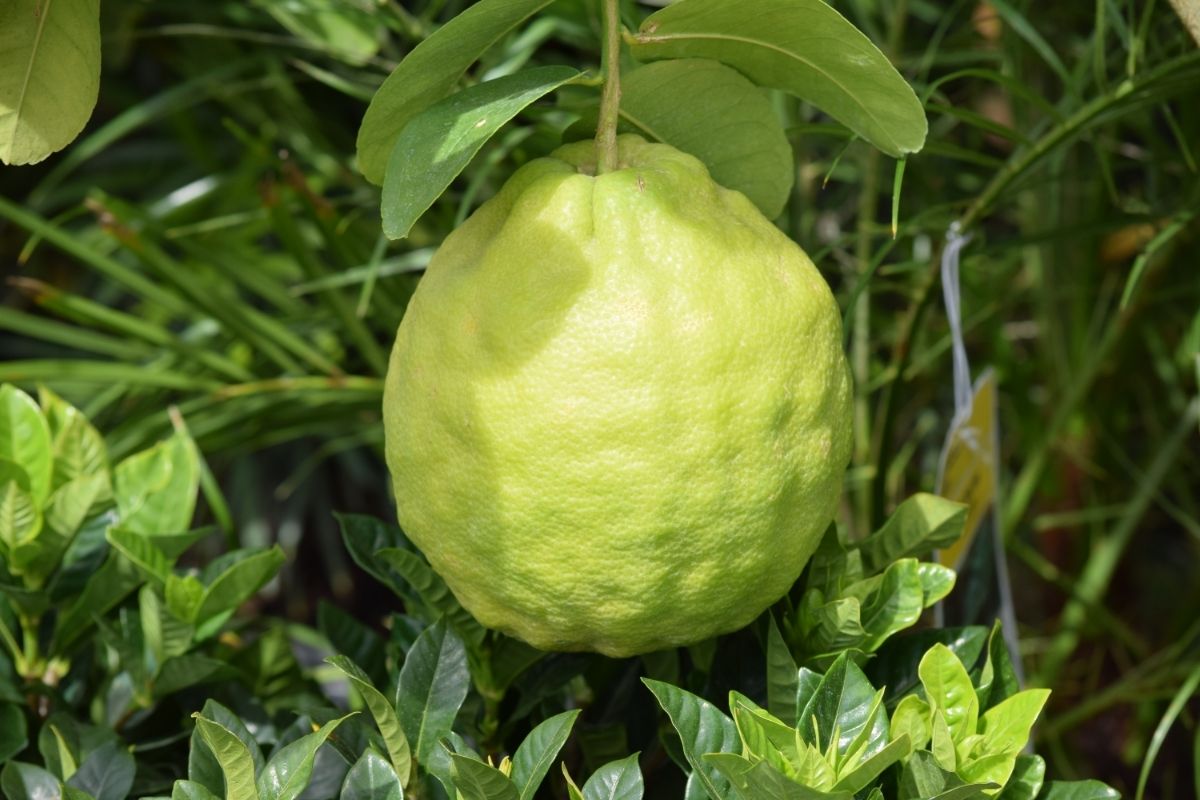
A cross between a citron (a hybrid of an orange and a lime) and a lemon, this lemon has a bumpy skin, a thick rind, and a sweet flavor.
It’s used as a dessert ingredient, but it’s also great in drinks. It’s less tart than a regular lemon, which makes it more suitable for desserts.
This type of lemon is sensitive to cold temperatures. It doesn’t grow well in colder climates, and is best grown in sunny climates, outdoors. With that said, the ponderosa lemon tree grows quickly, and produces a lot of fruit.
Because of its size, it’s good for small spaces. A mature Ponderosa lemon tree will be about 2-3 feet tall. It takes around three months before your Ponderosa lemon tree starts bearing fruit. Once it does start producing fruit, it should continue doing so for at least two seasons.
3. Meyer Lemon
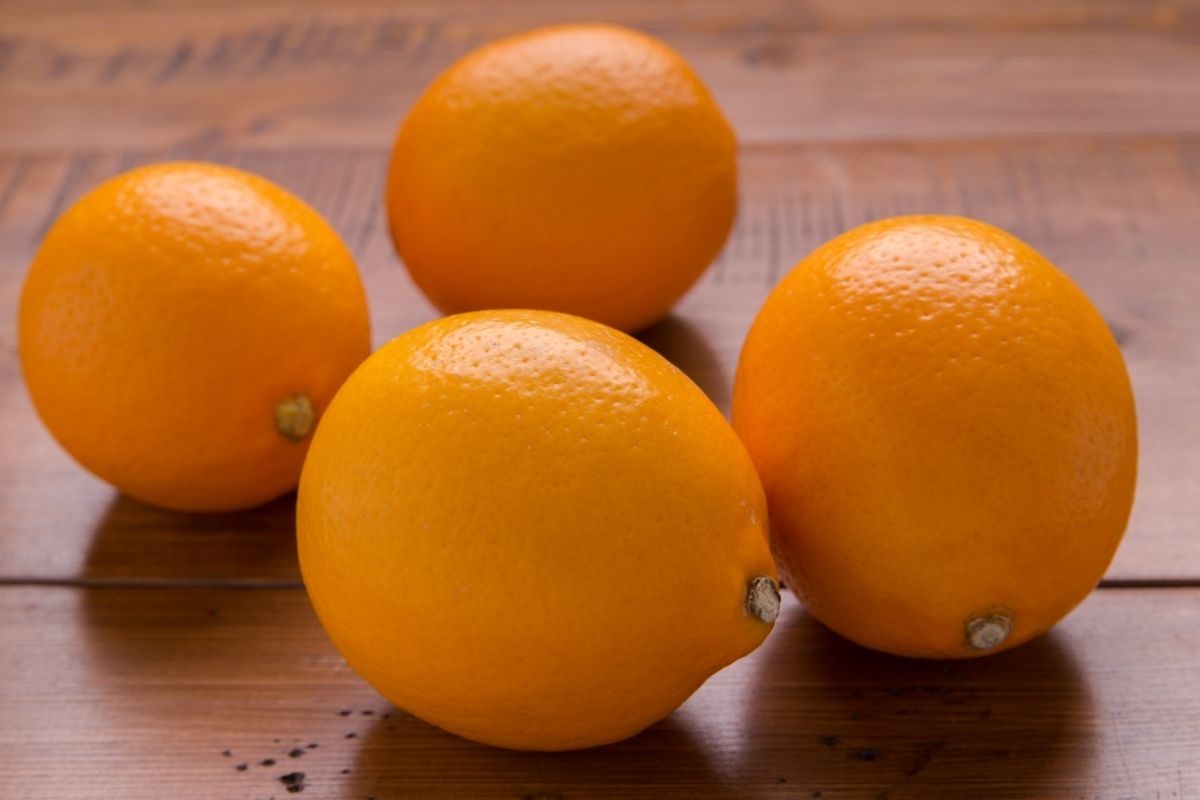
This is another hybrid lemon. The Meyer lemon is a combination of a mandarin and a lemon.
It has a round or egg-shape, and the skin is very soft. The pulp of this lemon is an orangish yellow color, and can produce lots of juice that has quite a sweet taste. The Meyer lemon is quite acidic, but it is balanced with a floral aroma. This makes it great for lemon tarts, and even sorbets.
It’s very easy to grow, and it’s available all year long. Typically, Meyer lemons are grown in California’s Central valley, Texas, and Florida.
4. Verna Lemon
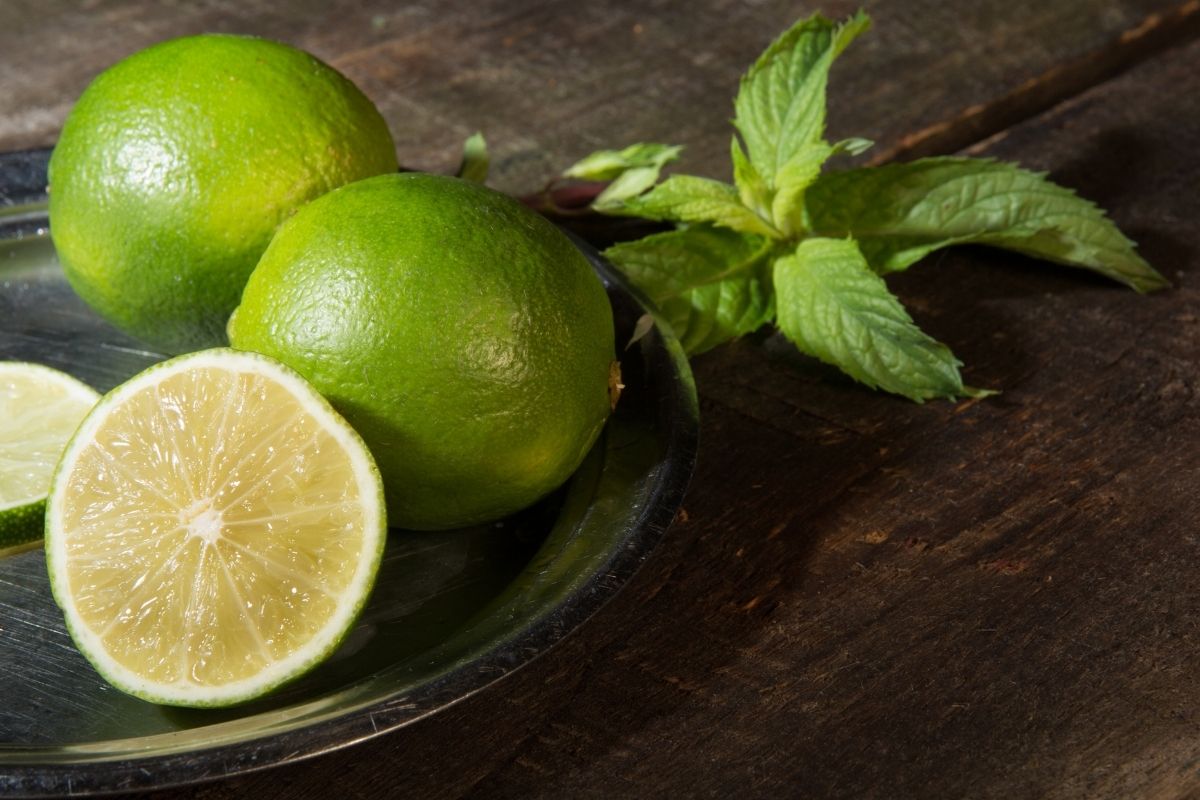
The verna lemon, on appearance, is a green lemon. By that, we mean that the zest of the lemon is green, not the whole fruit. Because of its unique appearance, the Verna is quite a distinct lemon.
It also grows much larger than most lemon cultivars, and will usually produce a harvest twice a year.
5. Bush Lemon
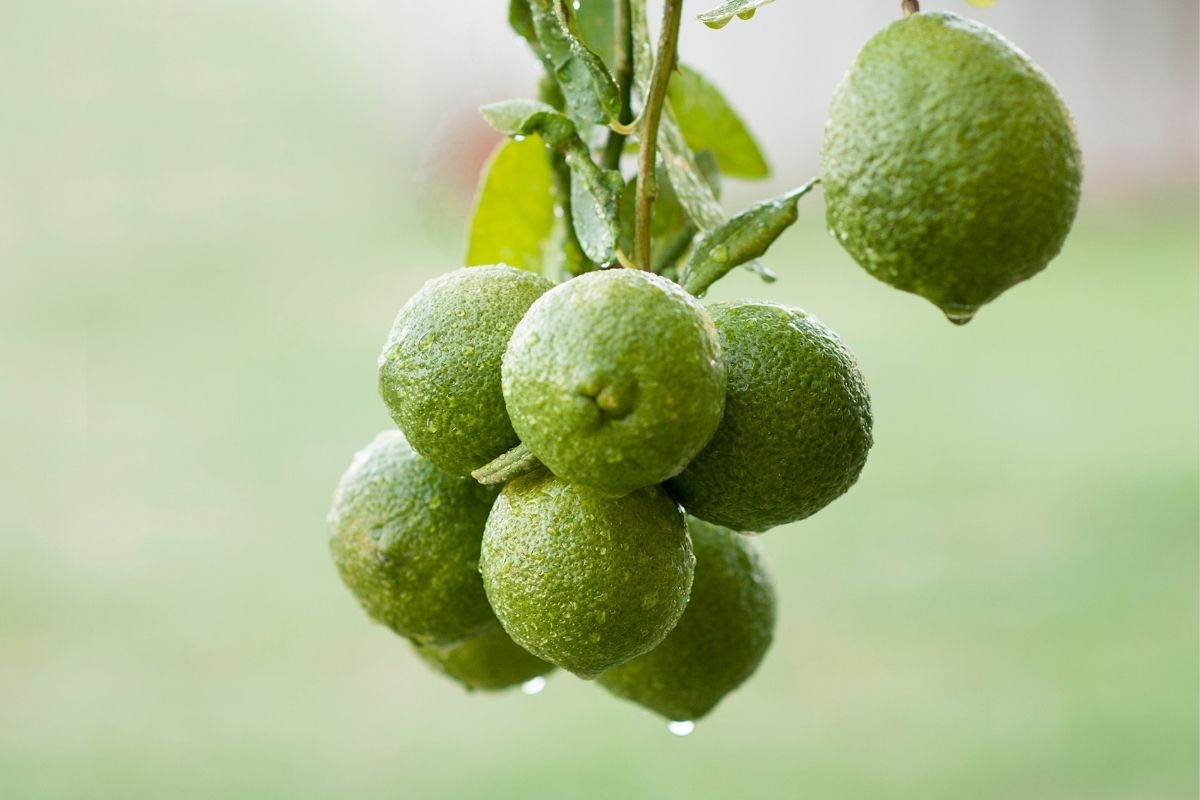
The bush lemon is a wild type of lemon that is found in Australia. The skin of a bush lemon is bumpy. The rind has a very strong lemon flavor, but it does not produce much juice.
It’s a self seeding plant, which makes it very common. The plant can grow up to 10-feet tall, while dwarf versions grow up to 6-feet tall.
6. Pink Variegated Lemon
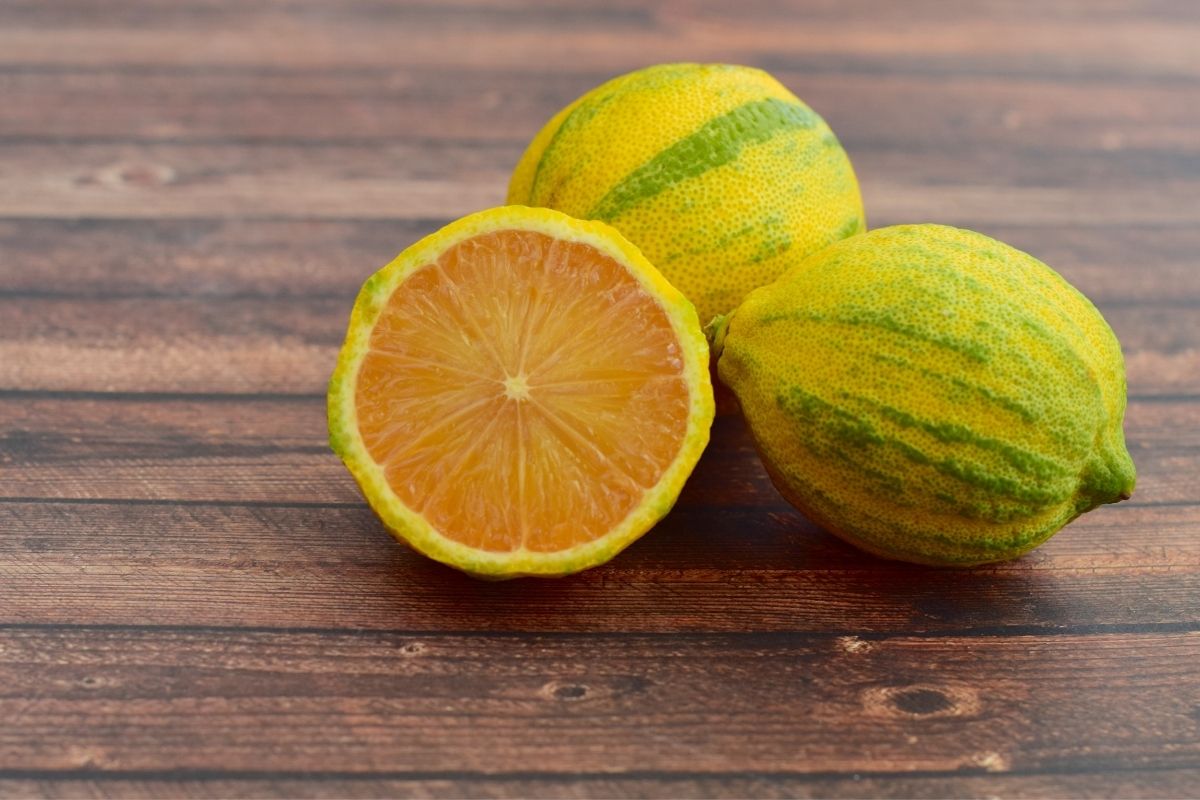
While this is not an overly common type of lemon, it is appreciated for its aesthetic value. The plant produces pink flowers, before the lemons are formed. The flowers are very beautiful, and can make a landscape look lovely.
Pink Variegated lemons are round. They are not very acidic, but they do have a slight bitter taste to them.
While the zest of the lemon is bright yellow, the pink variegated lemon is quite unique. Unsurprising, the inner flesh of the lemon is a pale pink color. The lemon is known for its unique beauty, as it is quite different from common varieties.
7. Primofiori Lemon
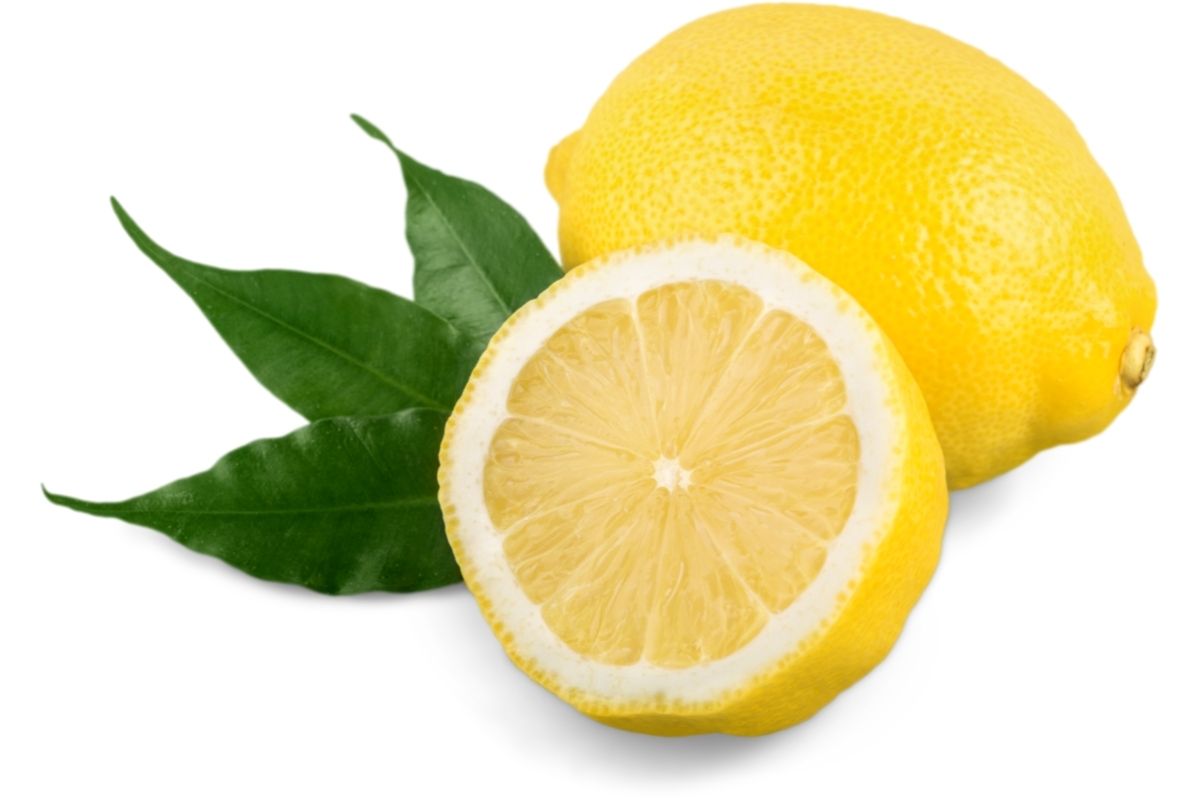
Traditionally from Spain, the primofiore lemon is also called the “Fino” lemon, “Mesero,” or the “Blanco” lemon. It grows mainly in Mediterranean climates, and produces fruit quite fast.
This lemon is a pale yellow shade. It is usually a round or oval shape, and this variety produces a lot of juice. The trees are known to be heavily thorned, which means regularly pruning the primofiore lemon is vital.
RELATED: Maranta Lemon Lime: An Easy to Follow Care, Propagation, and Watering Guide
8. Interdonato Lemon
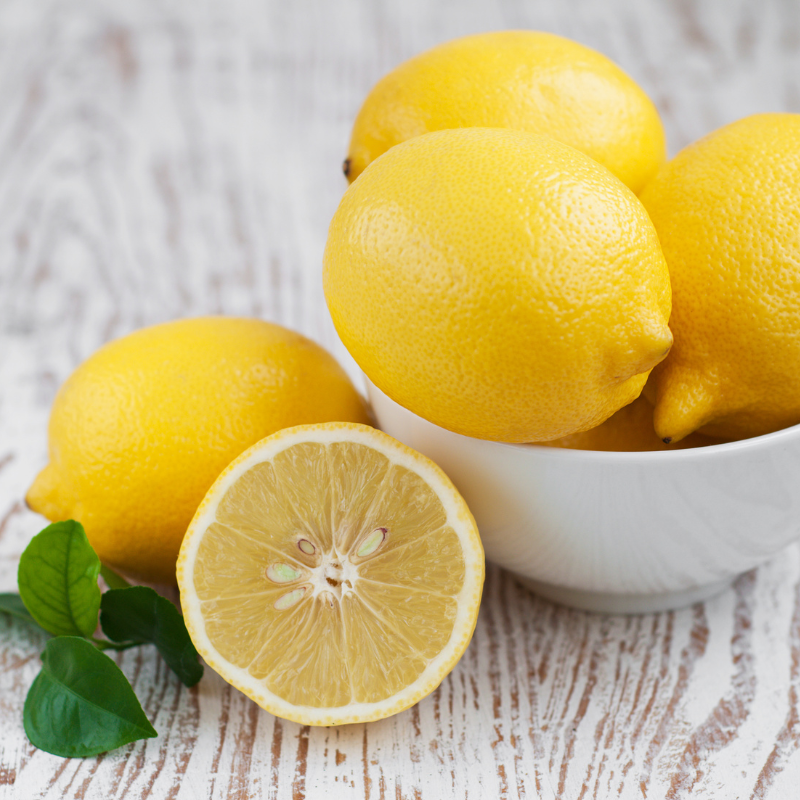
The Interdonato Lemon originated in Italy and Turkey, but now, it can be found growing very well in California, especially in areas near San Diego.
They are known to be one of the first trees that produce fruit during the spring months. Not only that, but these trees can bear quite a bit of fruit.
Interestingly, they are a lemon-citrus hybrid that has a very light bitterness. They produce a small amount of juice. Their shape is round, and they have a bright yellow coloring on the skin.
The interdonato lemon likes cool weather conditions, and they produce fruit during the late autumn and winter seasons.
9. Dorshapo Lemon
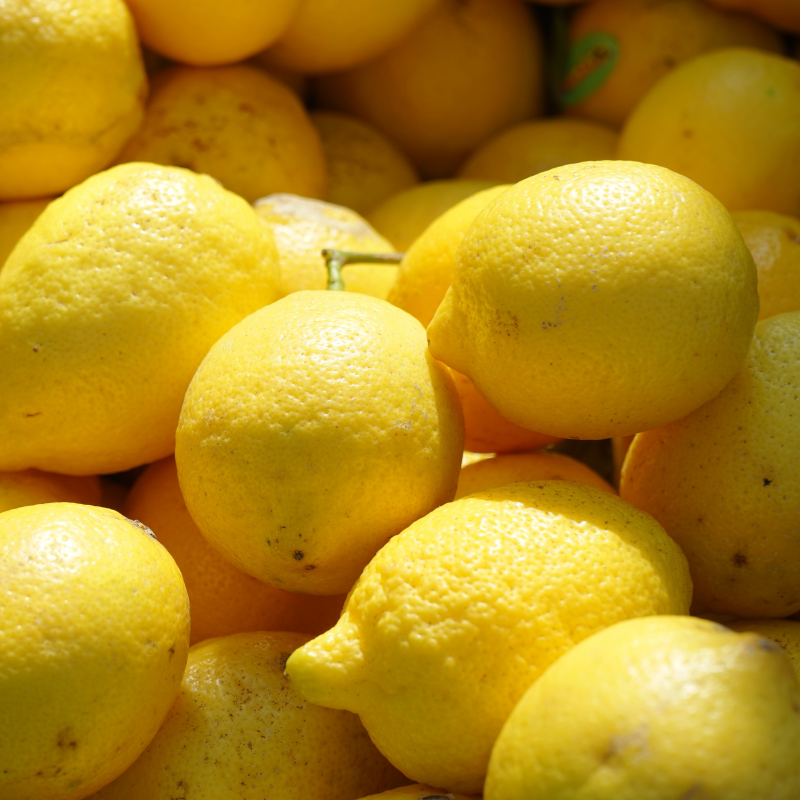
This is a mild, low acid lemon. It is related to the Eureka lemon, but vastly different in appearance.
The dorshapo lemon is often mistaken for a lime. This is because this variety of lemon has distinct green skin. An interesting fact about this lemon, is that this lemon was developed and named after Dr. William H. Dorshapoo, during the 1900s.
What’s more, this variety of lemon is typically used in baking, and some even eat this lemon raw (which, we do not recommend). That is because the lemon is quite sweet, with a mild flavor.
The dorshapo lemon requires a humid climate to grow it. If grown in a colder climate, it must be grown indoors.
10. Lisbon Lemons
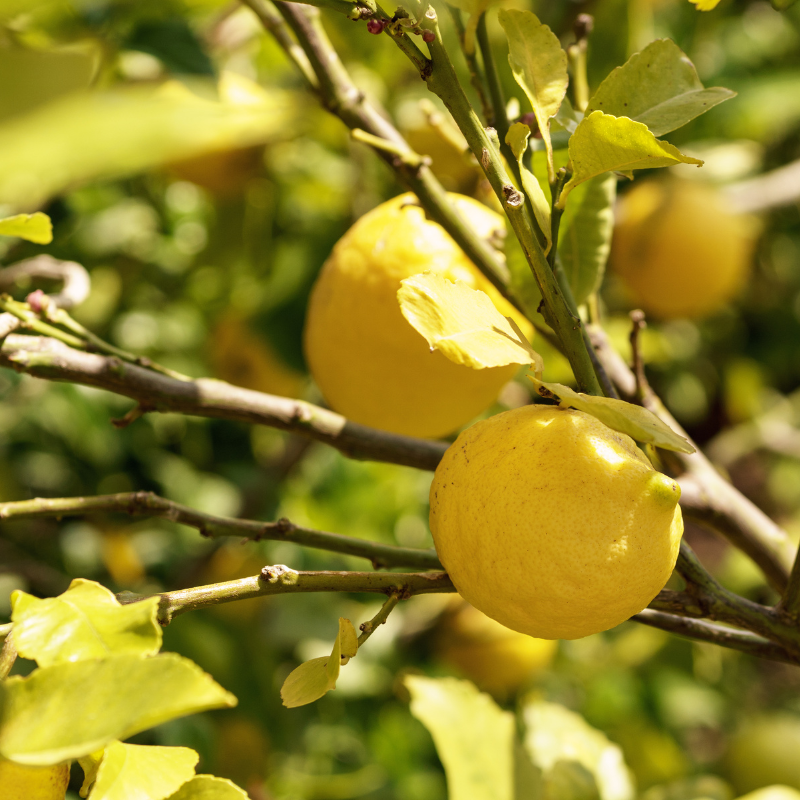
The Lisbon Lemon originated in Australia. It wasn’t until the 1950s that this variety of lemon arrived in America. Now, the Lisbon lemon is a very popular variety, grown frequently in California.
The color of the lemon is a traditional yellow, but Lisbon lemons are bigger than most other lemon varieties.
Lisbon lemons are one of the most common varieties of lemons. As a result, they’re a variety that most people can pick up from the supermarket.
11. Genoa Lemon
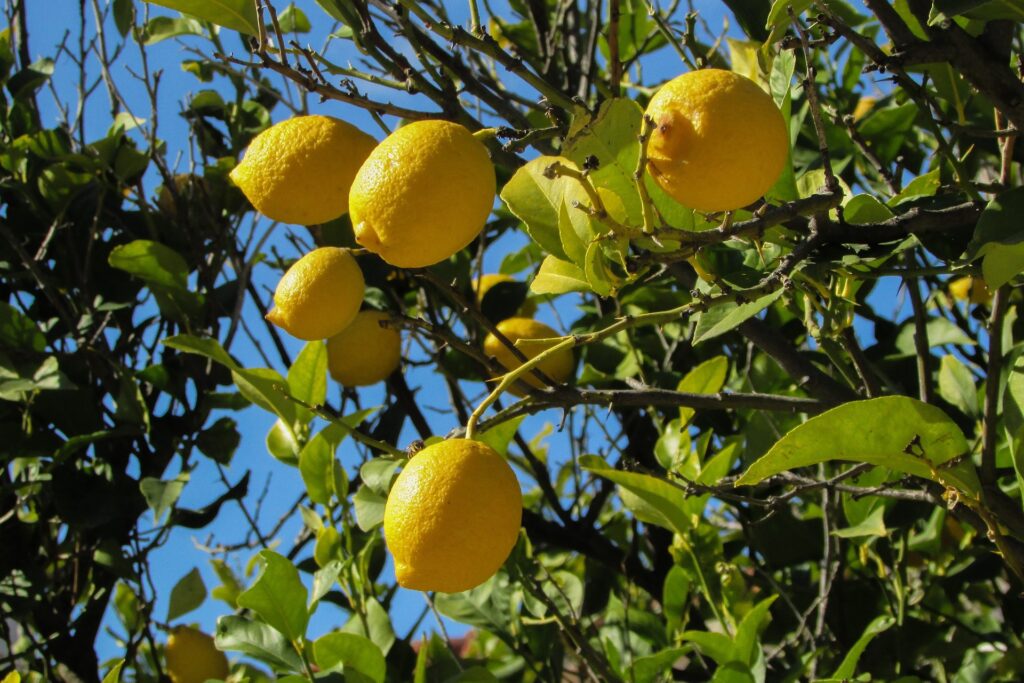
A Genoa lemon is a type of lemon grown mainly in Italy.
Unlike most varieties, the Genoa lemon is cold-hardy and thrives in cool climates. This variety is grown as a shrub, instead of a bush. It is ideal for smaller gardens because of its dense growth. It produces fruits rapidly, so is excellent for serious and novice gardeners.
12. Avalon Lemon
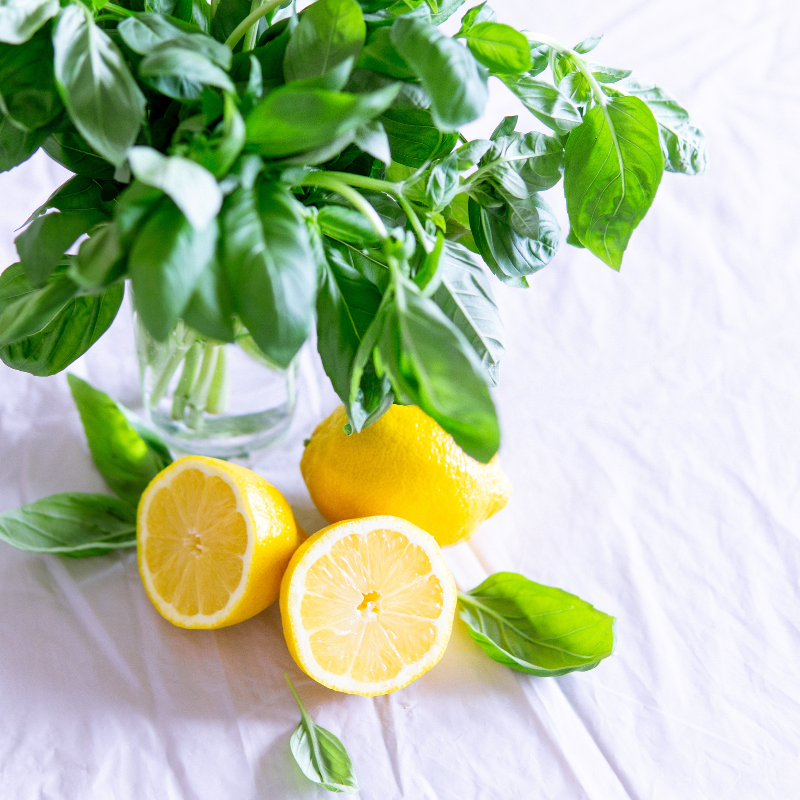
Avalon lemons, also referred to as Avon Lemons, are a large variety of lemon.
Avon lemons are not usually available for commercial purchase. They are, however, often used in juice concentrates. This is because the Avon lemon produces a lot of juice, which makes them the ideal lemon for juicing. When it comes to the flavor of the lemon, they are said to have a mild-sweet flavor.
This variety of lemon is grown in semi-tropical places, such as Florida. They need a humid and warm climate in order to grow. If you live in a colder climate, this variety must be grown in a greenhouse.
13. Volkamer Lemon
The origins of the Volkamer lemon are currently unknown, but it’s been said that it is likely a hybrid between a lemon, and sour orange.
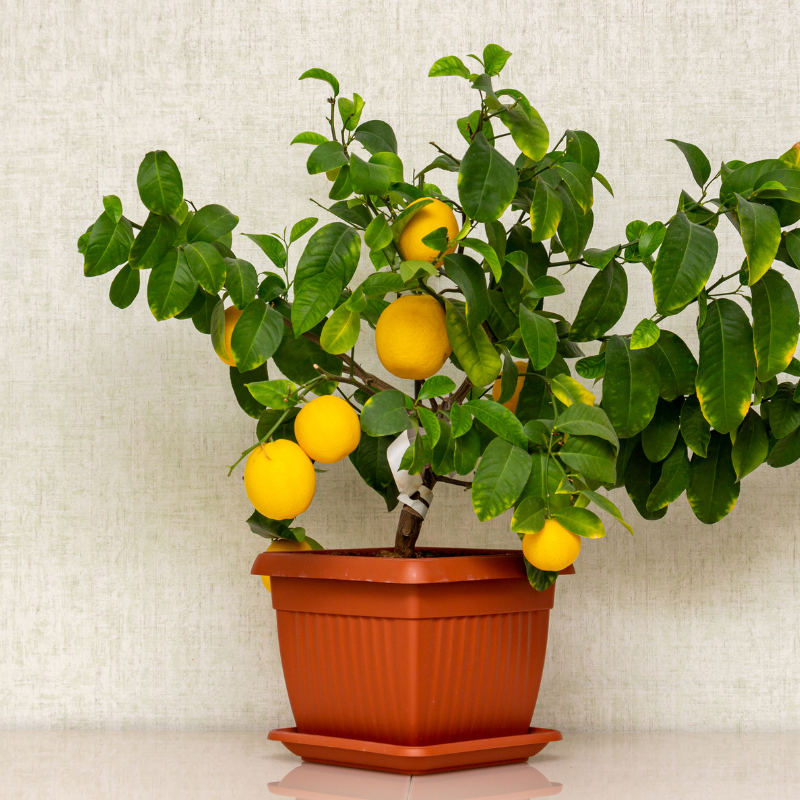
This is quite a unique lemon, because it does not have the traditional yellow color. Instead, the Volkamer lemon has an orange skin, which makes it look like — well, an orange!
What’s more, the flesh of the Volkamer lemon is also orange, so it can be quite a puzzle for people to discover that it is in fact a lemon.
This variety of lemon is known for its bitter flavor. It’s not usually grown for commercial use, but is a popular variety for gardeners.
Summary
This is just a couple of examples of the vast amount of lemon varieties out there. Lemons trees are beautiful. Not only do they produce great fruits, but the aroma it releases is very citrus scented and light.
Each lemon variety has its distinct features. While some varieties might be green or orange, others are sweeter, while some are incredibly tart in flavor. They all have their uses, and are an overall wonderful plant to grow.
Editor’s Recommendations
Shade in Asia: 16 Different Types Of Asian Trees







